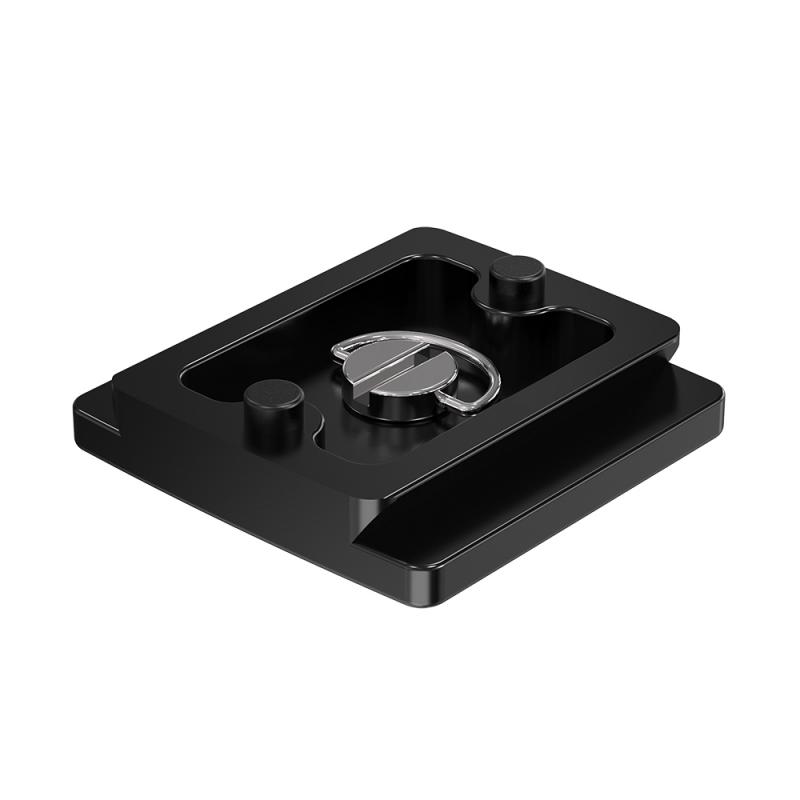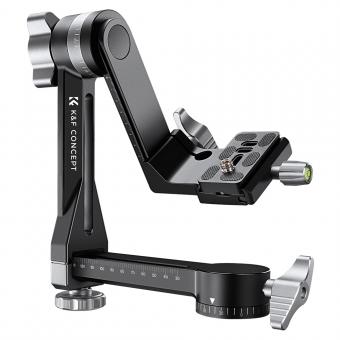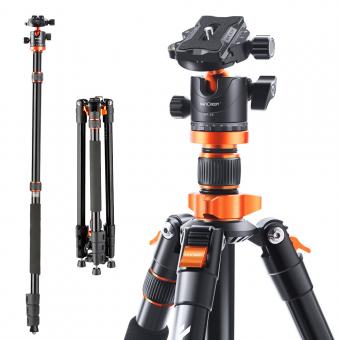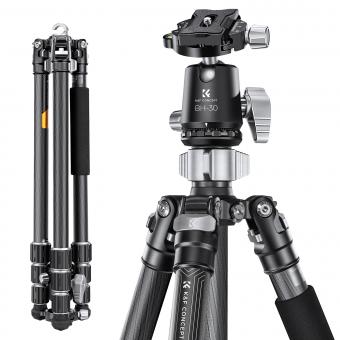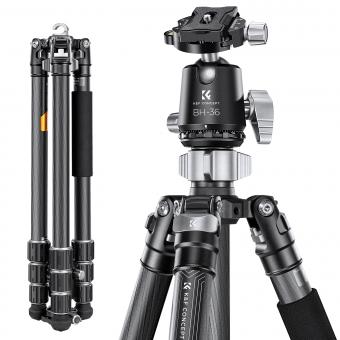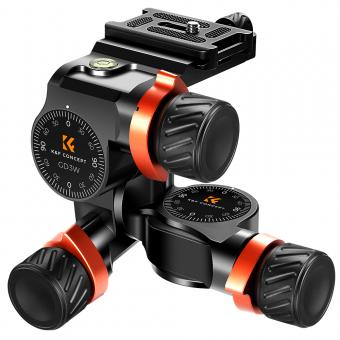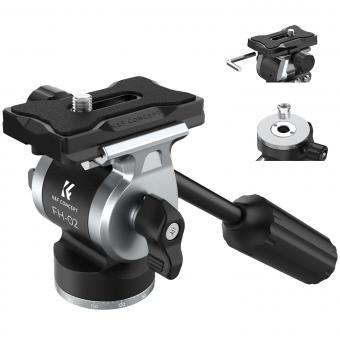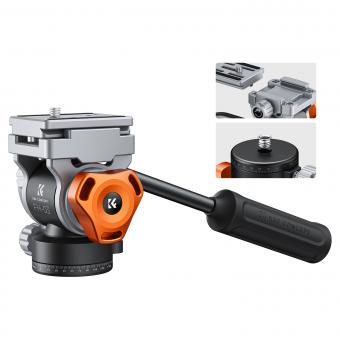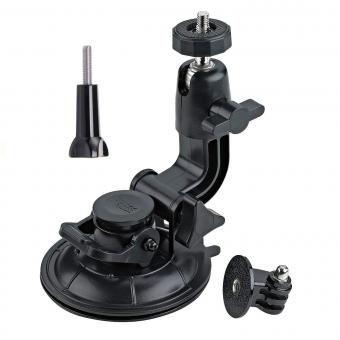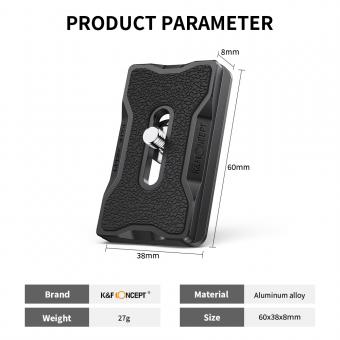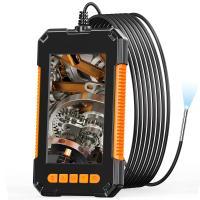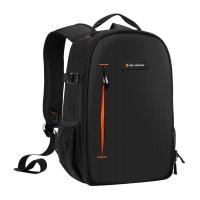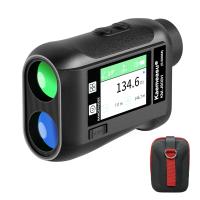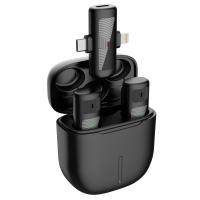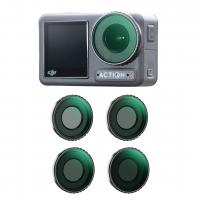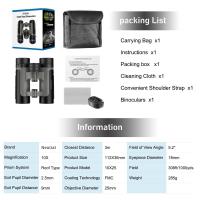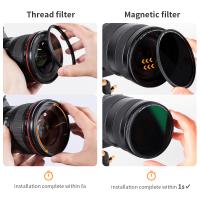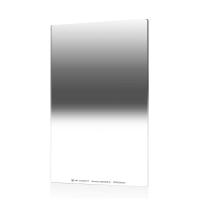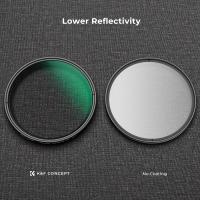How To Choose Tripod Head ?
When choosing a tripod head, there are a few factors to consider. First, think about the type of photography you will be doing. If you shoot landscapes or architecture, a ball head may be suitable for its versatility and ease of use. For precise adjustments and control, a three-way pan-tilt head is a good option. If you shoot wildlife or sports, a gimbal head can provide smooth movement and stability.
Next, consider the weight and size of your camera equipment. Ensure that the tripod head can support the weight of your gear. Look for a head with a sturdy build and a high load capacity.
Additionally, think about the quick-release system. A quick-release plate allows you to attach and detach your camera quickly and securely. Look for a head with a compatible quick-release system that suits your needs.
Finally, consider your budget. Tripod heads come in a range of prices, so determine how much you are willing to spend and find a head that offers the features you need within your budget.
1、 Types of tripod heads: Ball head, pan-tilt head, gimbal head.
When it comes to choosing a tripod head, there are a few factors to consider to ensure you select the right one for your needs. The type of tripod head you choose will largely depend on the type of photography you do and your shooting style. Here are the three main types of tripod heads to consider:
1. Ball Head: This is the most popular type of tripod head due to its versatility and ease of use. It allows for smooth and quick adjustments in any direction, making it ideal for general photography. Ball heads are compact and lightweight, making them great for travel. They are also suitable for shooting landscapes, portraits, and even some action shots.
2. Pan-Tilt Head: This type of tripod head offers separate controls for panning and tilting movements. It provides precise control over the camera's positioning, making it suitable for architectural and product photography. Pan-tilt heads are also commonly used in video shooting as they allow for smooth and controlled movements.
3. Gimbal Head: Gimbal heads are specifically designed for telephoto lenses and heavy camera setups. They provide excellent stability and balance, making them ideal for wildlife and sports photography. Gimbal heads allow for smooth tracking of moving subjects and are often used with long lenses to eliminate camera shake.
When choosing a tripod head, consider the weight and size of your camera setup, the type of photography you do, and your shooting style. It's also important to ensure that the tripod head is compatible with your tripod legs. Additionally, consider the build quality, ease of use, and any additional features that may be important to you, such as quick-release plates or bubble levels.
In recent years, there has been an increase in the popularity of hybrid tripod heads that combine the features of different types of heads. These hybrid heads offer photographers more flexibility and versatility in their shooting options. It's worth considering these newer options if you require a wider range of movements and shooting styles.
Ultimately, the choice of tripod head will depend on your specific needs and preferences. It's recommended to try out different types of heads before making a purchase to ensure you find the one that best suits your shooting style and requirements.
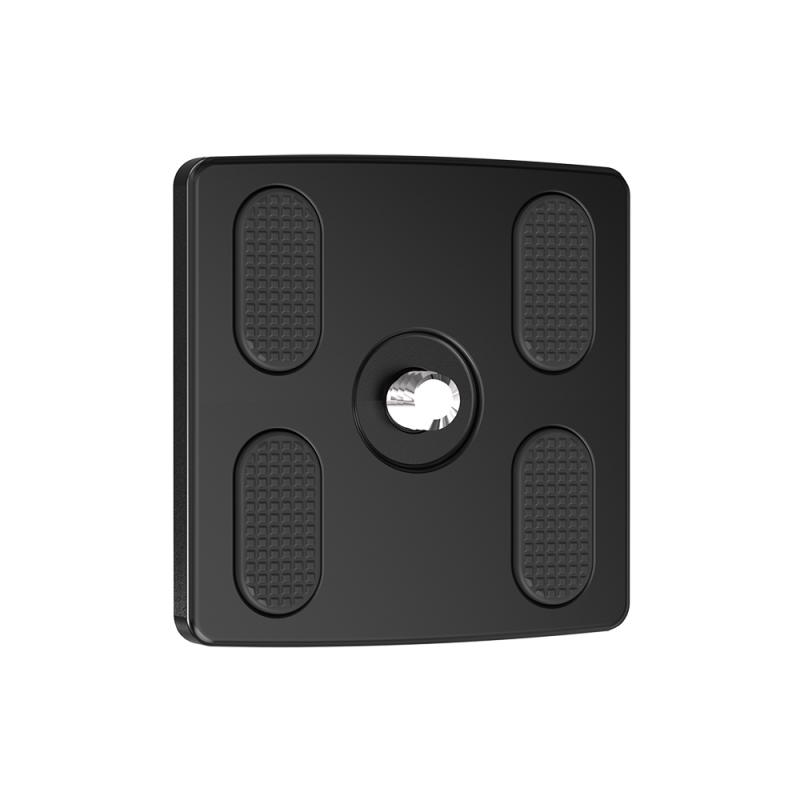
2、 Load capacity: Consider the weight of your equipment.
When it comes to choosing a tripod head, there are several factors to consider. One of the most important factors is the load capacity of the tripod head. Load capacity refers to the maximum weight that the tripod head can support without compromising stability and performance.
It is crucial to consider the weight of your equipment when selecting a tripod head. This includes not only your camera body but also any additional accessories such as lenses, flashes, or external microphones. It is always recommended to choose a tripod head with a load capacity that exceeds the weight of your equipment to ensure stability and avoid any potential damage.
In recent years, the trend in photography has seen a rise in the use of mirrorless cameras, which are generally lighter and more compact than traditional DSLR cameras. This has led to the development of tripod heads specifically designed for mirrorless cameras, with lower load capacities. If you are using a mirrorless camera, you may opt for a tripod head with a lower load capacity, as long as it can support the weight of your equipment.
Additionally, it is worth considering any future equipment upgrades you may make. If you plan on investing in heavier lenses or accessories in the future, it is wise to choose a tripod head with a higher load capacity to accommodate these potential additions.
In conclusion, when choosing a tripod head, it is essential to consider the load capacity and ensure that it can support the weight of your equipment. With the rise of mirrorless cameras, there are now options available with lower load capacities specifically designed for these lighter setups. However, it is always advisable to choose a tripod head with a load capacity that exceeds the weight of your current equipment and takes into account any future upgrades you may make.

3、 Quick release system: Arca-Swiss, Manfrotto, or other options.
When it comes to choosing a tripod head, one important factor to consider is the quick release system. The quick release system allows you to easily attach and detach your camera from the tripod head, saving you time and effort during your photography sessions.
One popular quick release system is the Arca-Swiss system. It is widely used and supported by many tripod manufacturers. The Arca-Swiss system features a dovetail design, which provides a secure and stable connection between the camera and the tripod head. It also allows for quick and precise adjustments, making it a favorite among professional photographers. Additionally, the Arca-Swiss system offers a wide range of compatible accessories, such as L-brackets and lens plates, which can enhance the versatility of your tripod setup.
Another well-known quick release system is the Manfrotto system. Manfrotto is a reputable brand in the photography industry and their quick release system is widely used in their tripod heads. The Manfrotto system features a unique plate design with a locking mechanism that ensures a secure attachment. It is known for its durability and ease of use, making it a popular choice among photographers of all levels.
Apart from Arca-Swiss and Manfrotto, there are other quick release systems available in the market. Some tripod manufacturers have their own proprietary systems, which may offer unique features and compatibility options. It is important to research and consider the specific needs of your photography style and equipment before choosing a quick release system.
In recent years, the Arca-Swiss system has gained popularity due to its versatility and widespread support. Many photographers prefer the Arca-Swiss system because it allows them to easily switch between different tripod heads and accessories from various manufacturers. However, the choice ultimately depends on your personal preferences and requirements. It is recommended to try out different quick release systems and see which one feels most comfortable and suits your needs before making a final decision.

4、 Movement control: Fluid or friction-based for smooth adjustments.
When choosing a tripod head, one important factor to consider is the movement control it offers. There are two main types of movement control: fluid and friction-based.
Fluid heads use a hydraulic system to provide smooth and controlled movements. They are commonly used in video applications where precise panning and tilting is required. Fluid heads offer adjustable drag settings, allowing you to control the resistance and speed of movement. This makes them ideal for capturing smooth and professional-looking videos. However, fluid heads tend to be more expensive compared to friction-based heads.
On the other hand, friction-based heads use a mechanical system to provide movement control. They rely on friction to hold the camera in place and allow adjustments. Friction-based heads are commonly used in photography applications, where quick adjustments and locking are important. They are generally more affordable and lightweight compared to fluid heads.
The choice between fluid and friction-based heads depends on your specific needs and preferences. If you primarily shoot videos and require smooth and controlled movements, a fluid head would be the better option. However, if you mainly shoot still photos and need quick adjustments, a friction-based head would be more suitable.
It's worth noting that there have been advancements in tripod head technology in recent years. Some manufacturers have introduced hybrid heads that combine the benefits of both fluid and friction-based systems. These hybrid heads offer smooth movements like fluid heads while also providing quick adjustments like friction-based heads. They can be a great option for photographers and videographers who require versatility in their equipment.
In conclusion, when choosing a tripod head, consider the type of movement control it offers. Decide whether you need fluid or friction-based control based on your specific shooting requirements. Additionally, keep an eye out for any new advancements in tripod head technology that may offer the best of both worlds.
